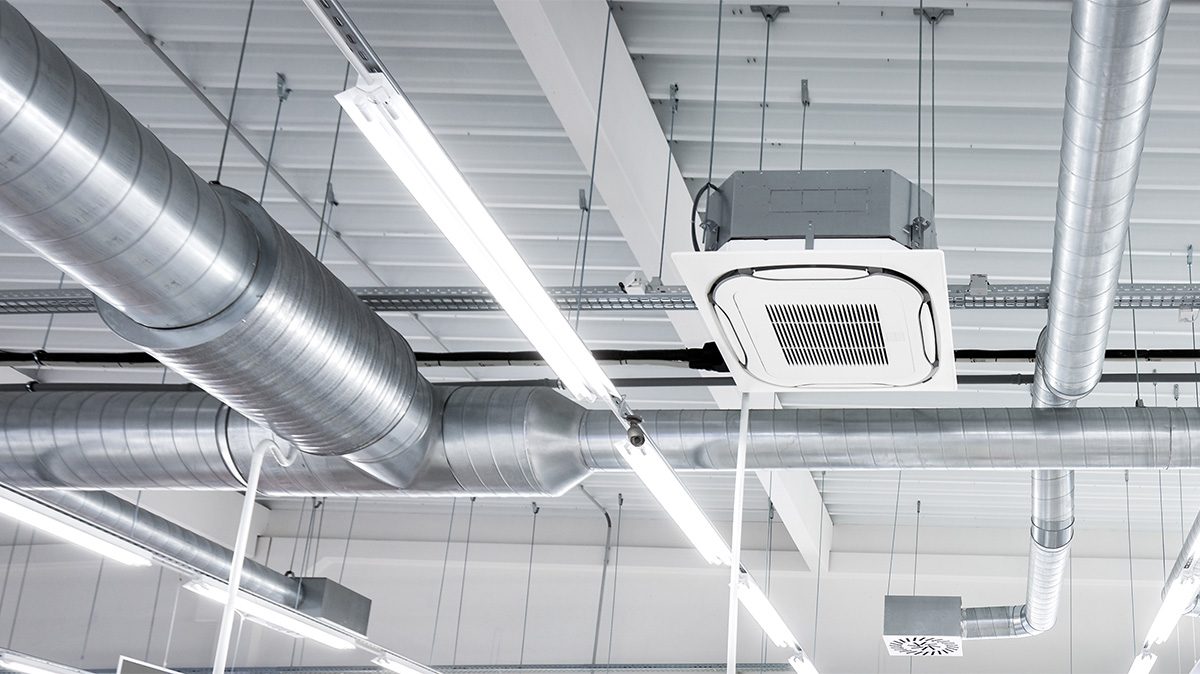A Guide to Commercial HVAC Systems – Part 1
Commercial HVAC systems are an essential part of any business. They regulate the temperature, humidity, and air quality in your building, ensuring that your employees and customers are comfortable. Of course, commercial HVAC systems are more complicated than their residential counterparts.
Issues with HVAC systems can cause a drop in employee productivity, a dip in clientele, and a lot of unnecessary costs to your business. So, we’ve prepared this guide for you to understand the design and construction of commercial HVAC and what ongoing maintenance is required for this important business component.
In Part 1, we’ll cover how commercial HVAC systems work and what types are available. In Part 2, we’ll tell you what you should consider in choosing a commercial HVAC system. Let’s go!
What Is Commercial HVAC?
To reiterate, HVAC, in general, is meant to regulate temperature, humidity, and air quality in a structure. Commercial HVAC systems can heat air by burning fuel – gas or oil, or by running off electricity. Conversely, they can cool air with a process that takes in the hot indoor air and cools it through water-cooled or refrigerant systems while eliminating any extra humidity.
That all can’t happen in a vacuum. Ventilation systems are necessary to introduce outside air (a key component in an HVAC system) via fans, passing through the outdoor and re-using indoor air through a filter and spitting out the building’s stale, contaminated air.
It’s essential to keep the CO2 at under 1000 molecules per million, and you can only do that with an effective ventilation system.
But how does this all work?
How Does a Commercial HVAC System Work?
If you take the basic concepts outlined above, it’s easier to understand the inner workings of a commercial HVAC system. However, don’t think that an understanding of the concept of commercial HVAC is a substitute for practical knowledge of how to repair or install one. Leave that to a trained professional.
Let’s continue.
Air Temperature
Heating in commercial HVAC works one of two ways. In one, burners create combustion gas transferred to a heat exchanger, where the air is warmed and passed through. In this case, heat pumps transfer outdoor heat indoors. Air conditioners, incidentally, work the same way as heat pumps, only backward, transferring indoor heat back to the outdoors.
The other way commercial HVAC heats air is through a boiler system. This heats water, and the hot water is carried through pipes installed in floors, ceilings, and walls. The warm air won’t blow on you – this is a radiant type of heat.
Ventilation
As we stated, ventilation systems use fans to move air in and out of the building. Fresh outside air is introduced to the system and filtered back out with the used air from inside the building.
As they pull the contaminated air out of the building, they should remove CO2, unwanted particles, odors, and other diluted gases. Controls on the system automate airflow and evaluate it to identify leaks and pressure issues, test indoor air quality, and more.
HVAC System Controls
Commercial buildings customarily use programmable thermostats to intelligently manage temperature control throughout the day. Some may include direct digital controls tied to a central computer to monitor data from different sensors and automated temperature management.
Types of Commercial HVAC Systems
When you select a new HVAC system, it’s helpful to consider the different design and functionality factors. Energy efficiency, capacity, and airflow are a few. Your floor plan is an important factor as well, as commercial HVAC systems can be custom fabricated and installed according to your building’s needs.
Packaged HVAC Systems
A packaged system is a single unit that contains all the parts necessary for heating and cooling. Packaged systems are available in gas/electric, electric/electric, and oil/electric models. Packaged terminal air conditioners appear window-mounted in hotels, apartment buildings, hospitals, and schools. Individuals can control temperature right on the unit itself.
Split HVAC Systems
A split HVAC system contains an outdoor unit that houses the compressor, condenser, and evaporator. An indoor air handler unit blows the air through the building’s existing ductwork. Perfect for residential buildings, each area can be controlled through its own thermostat or DDC. But, for each space, just like a packaged system, you might need a separate unit, taking space on rooftops and alongside buildings.
Rooftop Systems
RTUs, or rooftop package units, are packaged systems placed on a flat roof in a weatherproof housing structure and can heat and cool. An air hood pulls air in, where it passes through dampers. Then, the air is conditioned before it reaches the duct system.
RTUs save space, are easy to service and work for large or small spaces. They are especially handy for businesses in urban areas and businesses without space for a large HVAC system inside the building.
VRF Systems
A ductless system is ideal for new construction and retrofitting. They are very energy efficient and can heat or cool multiple zones in a building. They require no ductwork, which reduces installation costs and limits opportunities for air leaks.
These units use heat pumps or heat recovery systems. Great for medium or large buildings, VRF systems control refrigerant flow to indoor units, determining the amount of heating and cooling each zone requires. These systems are compact, efficient, and quiet.
Stay tuned for the next installment of this guide, where we tell you about key components of HVAC design plans for commercial building spaces. And, as always, if you need help with your commercial HVAC system, contact us today!


